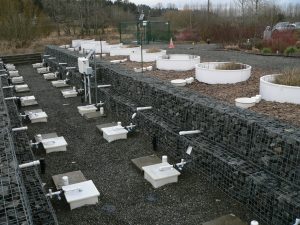Bioretention & Porous Pavement Research
Green infrastructure approaches such as bioretention cells and porous asphalt pavements offer promising stormwater remediation. Studies on bioretention media mixes indicate that soil composition (e.g., sand, compost, water treatment residuals) and media age can govern pollutant retention, including metals and nutrients. Porous asphalt field trials illustrate robust long-term infiltration and removal of particulate metals and sediments. However, periodic maintenance strategies—like regenerative air sweeping—can influence infiltration rates and total pollutant capture over time.
(References: Effects of Bioretention Soil Mixtures on Metal Speciation and Toxicity to Aquatic Communities; Remediation of Stormwater Pollutants by Porous Asphalt Pavement; A Bayesian modeling framework to predict stormwater pollutant reduction in bioretention media)
Low-Impact Development (LID)
LID emphasizes on-site infiltration and storage to reduce runoff and protect downstream waters. By modeling runoff probability using binomial regression, researchers identified how variations in precipitation depth translate to different levels of runoff risk. When combined with practices like bioretention and permeable pavements, such predictive tools can optimize system design, ensuring that runoff thresholds are rarely exceeded and effectively mitigating urban stormwater impacts.
(References: Estimating runoff probability from precipitation data; Remediation of Stormwater Pollutants by Porous Asphalt Pavement)

